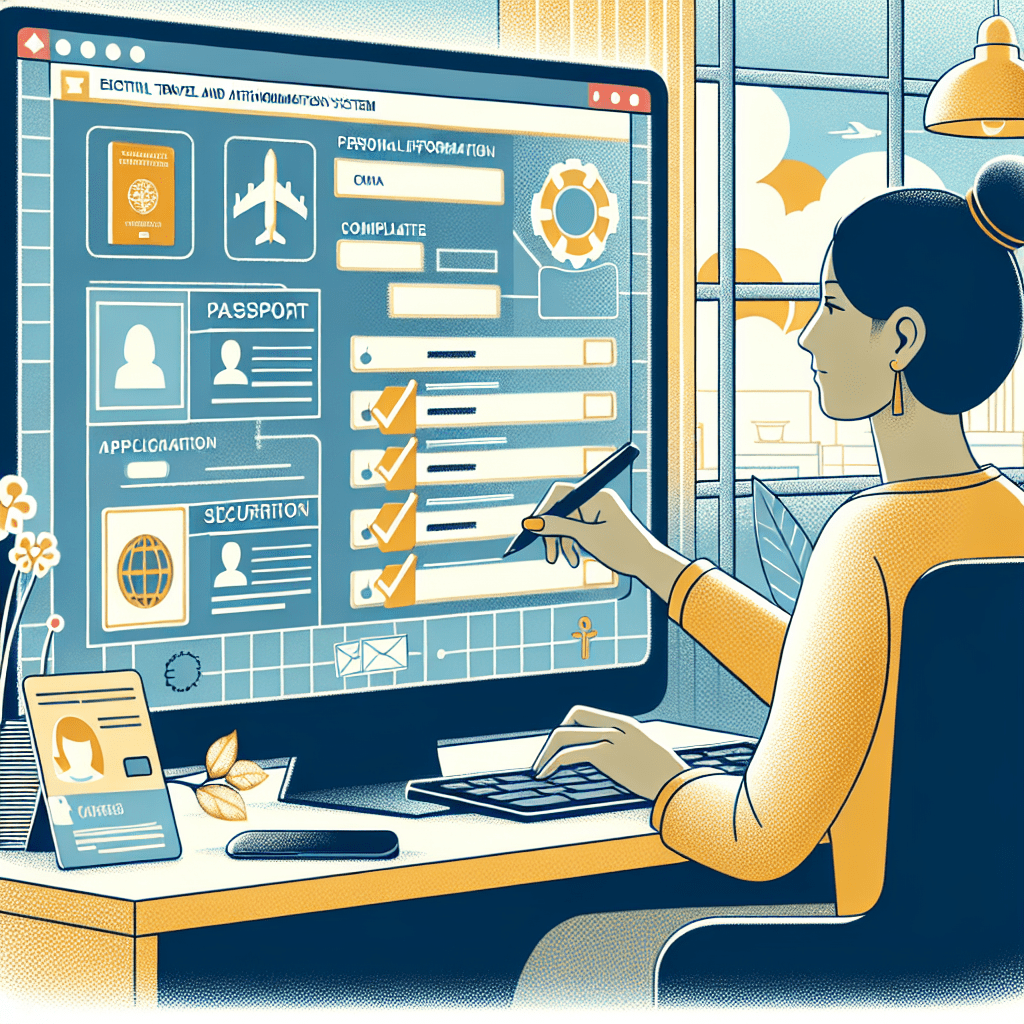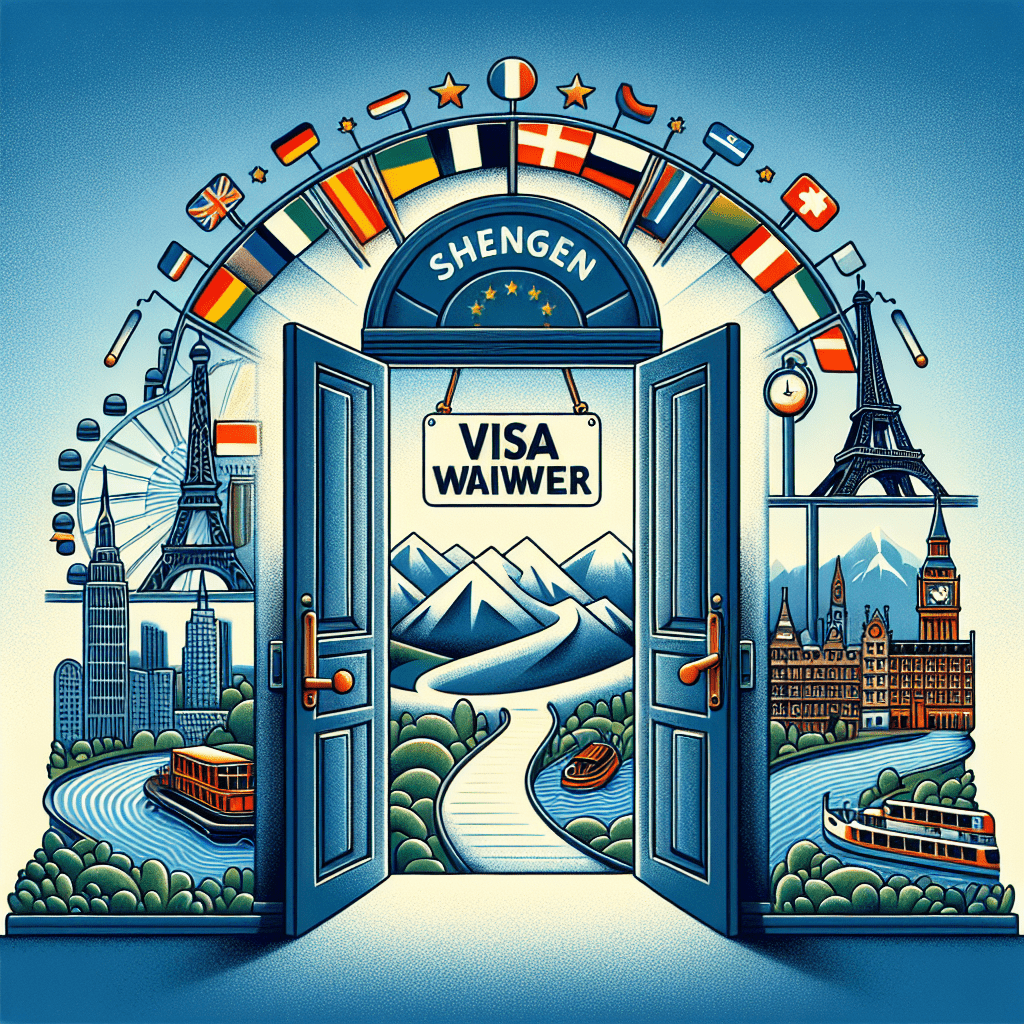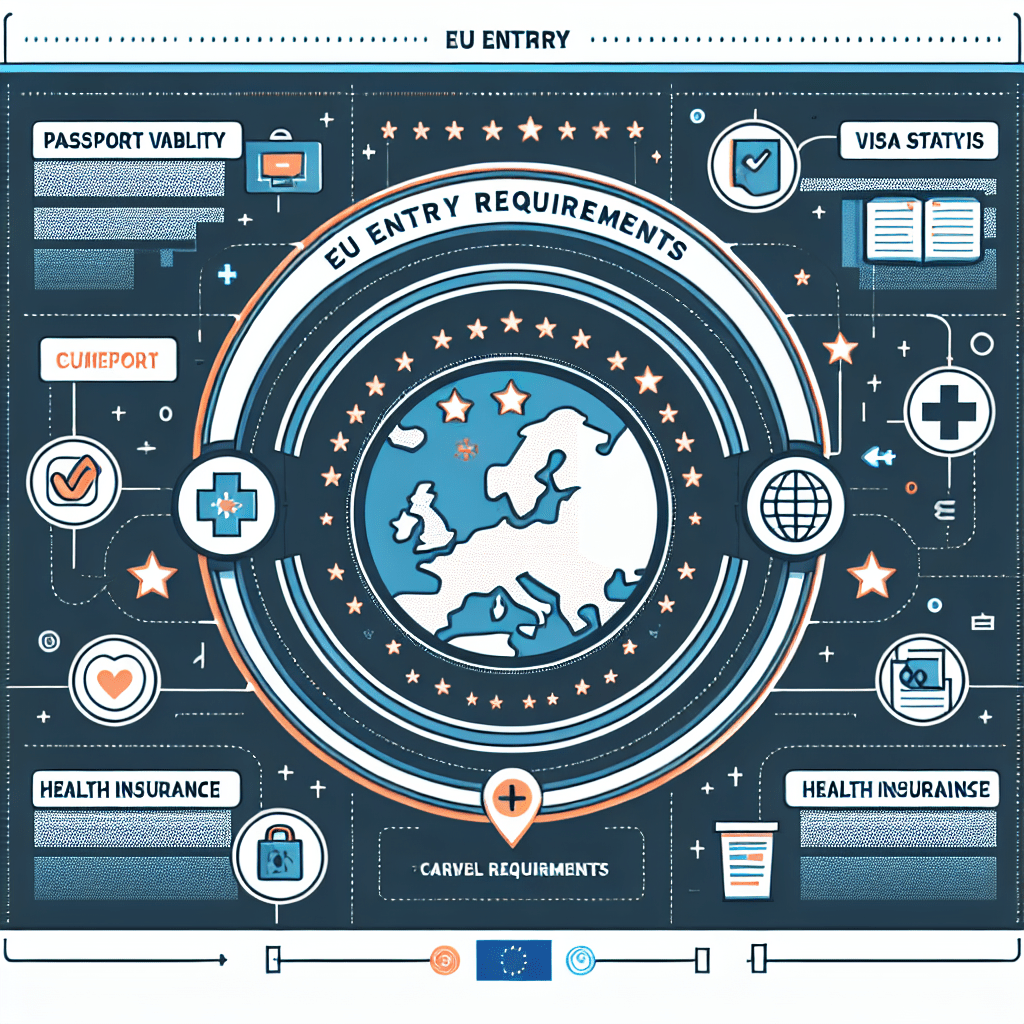3 Myths About ETIAS Debunked

The European Travel Information and Authorization System, commonly known as ETIAS, is becoming an essential part of travel planning for those wishing to visit the Schengen Area. As a new travel authorization system, ETIAS is designed to enhance security and streamline the process for travelers from visa-exempt countries. With its implementation, travelers can expect a more efficient entry into the European Union, ensuring that their journeys are both safe and enjoyable.
Despite its clear benefits, ETIAS has been surrounded by a cloud of misconceptions and myths that can lead to confusion and unnecessary anxiety among travelers. These misunderstandings often stem from a lack of information or misinterpretation of the system’s purpose and functionality. As a result, many potential visitors to Europe may find themselves unsure about the requirements and processes involved in obtaining an ETIAS authorization.
Addressing these myths is crucial for providing travelers with the clarity and accurate information they need to navigate the new system confidently. By debunking these common misconceptions, we aim to shed light on the true nature of ETIAS and its role in facilitating visa-free travel to Europe. This will not only help travelers better understand the European travel authorization process but also ensure they are well-prepared for their trips to the Schengen Area.
For those planning to explore the rich cultural heritage and diverse landscapes of Europe, understanding ETIAS is a vital step in the travel preparation process. By visiting ETIAS, travelers can access comprehensive information and guidance on how to obtain their travel authorization seamlessly. As we delve into the myths surrounding ETIAS, it is important to separate fact from fiction, providing travelers with the knowledge they need to embark on their European adventures with confidence.

Myth 1: ETIAS is a Visa
Explanation of ETIAS as a Travel Authorization System
One of the most prevalent myths about ETIAS is the misconception that it functions as a traditional visa. In reality, ETIAS is a European travel authorization system designed to enhance security and streamline the entry process for travelers from visa-exempt countries. Unlike a visa, which often requires a lengthy application process and extensive documentation, ETIAS is a more straightforward and efficient system.
The primary purpose of ETIAS is to pre-screen travelers before they arrive in the Schengen Area, ensuring that they do not pose a security risk. This proactive approach allows for a smoother entry process at the border, reducing wait times and enhancing overall travel efficiency. The system is part of a broader effort to strengthen Europe border control and maintain the safety and security of the Schengen zone entry.
ETIAS differs from traditional visas in several key ways. Firstly, it is not a physical document but an electronic travel authorization linked to the traveler’s passport. This means that travelers do not need to visit a consulate or embassy to obtain their ETIAS; instead, they can complete the application process online. Additionally, the requirements for obtaining an ETIAS are less stringent than those for a visa, making it a more accessible option for travelers.
The streamlined application process is another significant difference between ETIAS and traditional visas. Applicants can complete the ETIAS application online in a matter of minutes, providing basic personal information, travel details, and answers to security-related questions. This efficient process is designed to minimize the administrative burden on travelers while maintaining high security standards.
Clarification of Eligibility and Application Requirements
Understanding who needs an ETIAS and the application requirements is crucial for travelers planning to visit the Schengen Area. ETIAS is required for citizens of visa-exempt countries who wish to enter the Schengen zone for short stays of up to 90 days within a 180-day period. This includes tourists, business travelers, and individuals visiting family or friends.
During the application process, travelers must provide essential information, including their full name, date of birth, nationality, and passport details. Additionally, applicants will need to answer questions related to their health, criminal history, and previous travel to conflict zones. This information is used to assess the traveler’s eligibility and ensure they do not pose a security threat.
The application fee for ETIAS is modest, making it an affordable option for most travelers. The processing time is typically quick, with most applications being approved within minutes. However, it is advisable for travelers to apply for their ETIAS well in advance of their planned travel dates to account for any potential delays or additional information requests.
Impact of ETIAS on Frequent Travelers
For frequent travelers, understanding the duration of validity and the relevance of multiple entries is essential. An approved ETIAS is valid for three years or until the traveler’s passport expires, whichever comes first. This means that travelers can use their ETIAS for multiple trips to the Schengen Area during its validity period, provided each stay does not exceed 90 days within a 180-day period.
The ability to make multiple entries with a single ETIAS authorization is particularly beneficial for business travelers and those with family or personal connections in Europe. It allows for greater flexibility and convenience, eliminating the need to apply for a new travel authorization for each trip.
In summary, ETIAS is not a visa but a European travel authorization system designed to facilitate visa-free travel to Europe for eligible travelers. By understanding the differences between ETIAS and traditional visas, travelers can better prepare for their journeys and enjoy a seamless entry into the Schengen Area. The system’s streamlined application process, combined with its focus on security and efficiency, makes it an invaluable tool for modern travel.

Myth 2: ETIAS is Difficult to Obtain
User-Friendly Nature of the ETIAS Application Process
Contrary to the belief that ETIAS is difficult to obtain, the system is designed to be user-friendly and accessible to travelers from visa-exempt countries. The entire process is conducted online, eliminating the need for in-person visits to embassies or consulates. This digital approach aligns with modern travel needs, making the European travel authorization process more convenient and efficient.
The online application process for ETIAS is straightforward and can be completed in a few simple steps. Applicants are required to fill out a form with basic personal information, passport details, and travel plans. Additionally, they must answer a series of security-related questions to ensure compliance with EU entry requirements. The form is designed to be intuitive, guiding users through each section with clear instructions.
One of the key advantages of the ETIAS system is its quick processing time. Most applications are processed within minutes, with travelers receiving their authorization via email. This rapid turnaround is a significant improvement over traditional visa processes, which can take weeks or even months. The high success rate of applications further underscores the system’s efficiency, with the majority of applicants receiving approval without any issues.
Misunderstandings About Rejection Rates
Another common misconception is that ETIAS applications are frequently rejected. In reality, the rejection rate is relatively low, and most denials are due to easily avoidable errors or omissions. Common reasons for application rejection include incorrect or incomplete information, discrepancies between the application and passport details, and failure to meet the basic eligibility criteria.
To ensure a successful application, travelers should double-check all information before submission, ensuring that it matches their passport and travel documents. It is also advisable to review the EU travel requirements and Schengen travel rules to confirm eligibility. By taking these precautions, applicants can significantly reduce the risk of rejection and enjoy a smooth application process.
In the rare event that an application is denied, travelers have the option to appeal the decision. The appeals process allows applicants to provide additional information or correct any errors that may have led to the initial rejection. This ensures that travelers have a fair opportunity to obtain their ETIAS and proceed with their travel plans.
Comparison with Other Entry Authorization Systems
When compared to other entry authorization systems, ETIAS stands out for its efficiency and user-friendly design. The digital processing of applications not only speeds up the approval process but also reduces the administrative burden on both travelers and authorities. This streamlined approach is a significant advantage over traditional visa systems, which often involve lengthy paperwork and extended waiting periods.
The benefits of digital processing extend beyond convenience. By leveraging technology, ETIAS enhances security measures, allowing for more effective pre-screening of travelers. This proactive approach helps maintain the integrity of the Schengen zone entry and supports the broader goals of Europe border control.
Overall, the ETIAS system is designed to facilitate visa-free travel to Europe, making it an accessible and efficient option for eligible travelers. By understanding the user-friendly nature of the application process and addressing common misconceptions about rejection rates, travelers can confidently navigate the European entry system and enjoy their journeys to the Schengen Area.

Myth 3: ETIAS Intrudes on Personal Privacy
Integrity of Data Protection within ETIAS
A common concern among travelers is the belief that ETIAS intrudes on personal privacy. However, the system is designed with robust data protection measures to ensure the integrity and security of personal information. The European Union places a high priority on data privacy, and ETIAS is no exception, adhering to stringent EU regulations to safeguard traveler information.
ETIAS collects only the necessary data required to assess the eligibility and security risk of travelers. This includes basic personal information, passport details, and responses to security-related questions. The data is stored securely and is protected by advanced encryption technologies to prevent unauthorized access. These security measures are in line with the EU’s General Data Protection Regulation (GDPR), which sets the standard for data protection and privacy.
Transparency is a key component of the ETIAS system. Travelers are informed about the data being collected and the purpose of its use. This openness ensures that applicants are aware of how their information is handled, fostering trust in the system. The European travel authorization process is designed to balance security needs with respect for individual privacy, ensuring that travelers can enjoy visa-free travel Europe without compromising their personal data.
Clarification of How Personal Information is Utilized
Understanding how personal information is utilized within the ETIAS framework is crucial for dispelling privacy concerns. The primary purpose of data collection is to assess the eligibility of travelers and identify any potential security threats. This proactive approach helps maintain the safety and security of the Schengen area travel, supporting the broader goals of Europe border control.
The data collected through ETIAS is processed by authorized agencies within the EU, including border control and security agencies. These agencies are responsible for evaluating the information and making informed decisions about travel authorizations. Importantly, there are strict limitations on data sharing, ensuring that personal information is not disclosed to unauthorized parties.
Data sharing is limited to relevant authorities within the EU, and any exchange of information is conducted in compliance with EU entry requirements and regulations. This controlled approach ensures that personal data is used solely for its intended purpose, minimizing the risk of misuse or unauthorized access. The Schengen visa waiver system is designed to protect traveler privacy while enhancing security measures across the region.
Assurances for Travelers Concerned About Privacy
For travelers concerned about privacy, there are several assurances in place to protect their personal data. The legal frameworks governing ETIAS, including the GDPR, provide comprehensive protection for consumer data. These regulations ensure that personal information is handled with care and respect, with strict penalties for any breaches of data protection standards.
Travelers also have rights over their data, including the right to access, correct, and delete their information. These rights empower individuals to take control of their personal data and ensure that it is accurate and up-to-date. The European entry system is committed to upholding these rights, providing travelers with the confidence that their privacy is respected.
In summary, the ETIAS system is designed to protect personal privacy while facilitating travel authorization Europe. By understanding the integrity of data protection measures, the purpose of data collection, and the legal frameworks in place, travelers can be assured that their personal information is secure. The system’s commitment to transparency and privacy protection ensures that travelers can enjoy their journeys to the Schengen Area with peace of mind.

Conclusion
ETIAS plays a pivotal role in enhancing both travel security and convenience for those visiting the Schengen Area. As a modern European travel authorization system, it addresses the evolving needs of international travel by implementing a streamlined and efficient process. By pre-screening travelers from visa-exempt countries, ETIAS ensures that potential security risks are identified and managed before they reach European borders. This proactive approach not only strengthens Europe border control but also contributes to the overall safety and stability of the region.